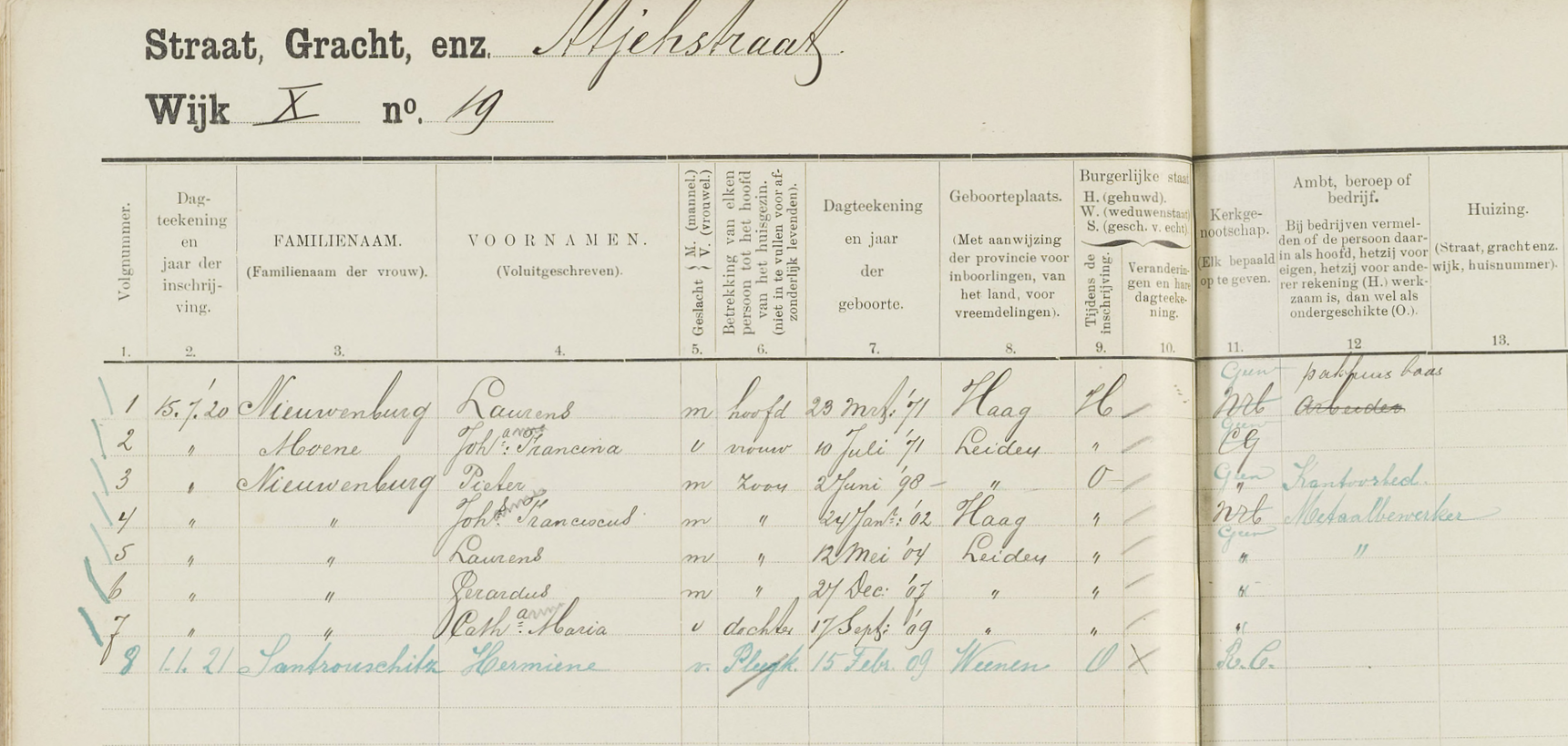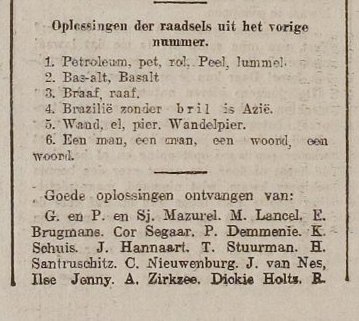Hermine Santrouschitz goes to the Netherlands
In December 1920, Hermine arrived in Leiden from Austria to live with the Nieuwenburg family.

Inschrijving Atjehstraat 19.
Erfgoed Leiden e.o. Bevolkingsregister Leiden, 78e supplement. Copyright: Publiek domein.
After the end of the First World War hunger and deprivation prevailed in parts of Europe. Thanks to the work of aid organisations, thousands of children, mainly from Hungary and Austria, temporarily came to the Netherlands to recuperate in host families. Hermine Santrouschitz, better known as Miep Gies, was one of them.[1] She had lived in Vienna since birth and was one of many children in need there.
According to a statement by the 'Central Committee for the Care of Austrian Workers' Children in the Netherlands, sub. com Leiden', Hermine Santrouschitz, better known as Miep Gies, came to Leiden on 12 November 1921 under the care of the L. Nieuwenburg family.[2]
However, according to a later statement, Miep had arrived a year earlier, on 17 December 1920, from Austria at the home of Laurens Nieuwenburg in Leiden.[3] On 13 December 1920, a doctor from the State Health Inspection Service in Vienna declared that she should be permitted to stay in the Netherlands due to her state of health.[4] Miep was registered in the Population Register of Leiden as of 1 January 1921 at the address Atjehstraat 19.[5]
Her own memories of the journey and the first time in the Netherlands can be read in Herinneringen aan Anne Frank ('Memories of Anne Frank').[6] Miep recounts, among other things, that the eldest son of the foster family, Pieter Nieuwenburg, was at a preparatory teacher training college and spoke a little German. He became her interpreter.[7]
In the Leidsch Dagblad of 14 April 1921 there was a competition in which Miep and her new foster sister Cato Nieuwenburg participated. Their solution was correct and their names were printed in the edition of 21 April 1921.[8]
Footnotes
- ^ Zie: Jan Pieter Koster en Helma de Jonge, 'Hoe Miep Gies naar Nederland kwam', in: Ons Amsterdam, 01/05/2022; Gertjan Broek, Emigranten rond het Achterhuis van Anne Frank, in: De moderen tijd, jrg. 3, nr. 3 (2019), p. 211-226.
- ^ Anne Frank Stichting (AFS), Anne Frank Collectie (AFC), reg. code A_Gies_I_005: Verklaring van de voorzitter van het Centraal Comite ter verzorging van Oostenrijkse Arbeiderskinderen in Nederland sub. Com. Leiden, gedateerd 19 augustus 1923. De verklaring is ondertekend door de secretaris Proos. Voorzitter van het Leidse comité is een zekere Van Stralen, penningmeester is mevrouw Van der Woude. Leidsch Dagblad, 28 december 1920.
- ^ AFS, AFC, reg. code A_Gies_I_018: Verklaring Nieuwenburg-Moene inzake naturalisatie, 8 juni 1939.
- ^ AFS, AFC, reg. code A_Gies_I_013: Bewijs van het Staatstoezicht op de Volksgezondheid, 13 december 1920.
- ^ Regionaal Archief Leiden, Leiden, Bevolkingsregister Leiden (1890-1923), nr. 1378, folio 56. Miep wordt hier “Hermiene” genoemd.
- ^ Miep Gies & Alison Leslie Gold, Herinneringen aan Anne Frank. Het verhaal van Miep Gies, de steun en toeverlaat van de familie Frank in het Achterhuis, Amsterdam: Bert Bakker, 1987, p. 14-19.
- ^ Gies & Gold, Herinneringen aan Anne Frank, p. 17.
- ^ Leidsch Dagblad, 14 en 21 april 1921.
Digital files (1)

Leidsch Dagblad, 21 april 1921